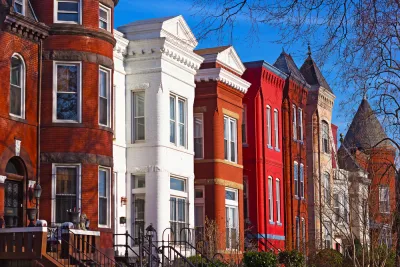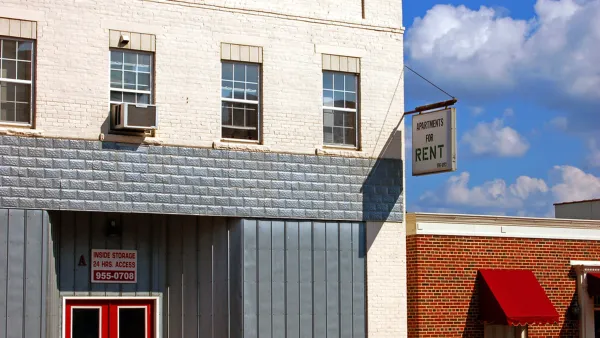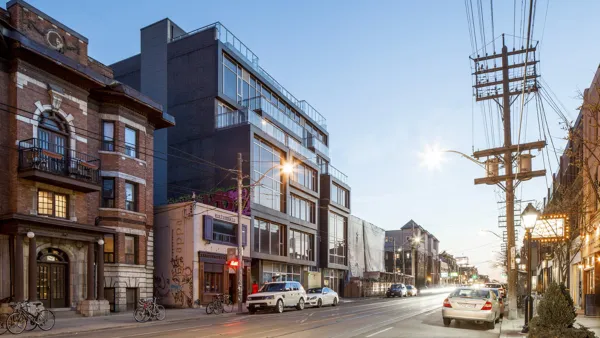Walkable cities with strong downtowns are closing the economic gap with suburbia, while sprawling cities—even those with high population growth—are not doing as well.

Pete Saunders, author of the Corner Side Yard blog, has engaged in an enormous amount of research regarding the economic disparities between cities and suburbs. In particular, one of his recent articles has shown that in ten of the fourteen largest urbanized areas, the gap between city and suburban median household incomes is narrower than in 2000. For example, in 2000, the median income in Washington, D.C. was 62.8 percent of regional income; by 2015, the city's household income had grown to 79.3 percent of regional income. However, such gentrification was less common in urbanized areas with 1-3 million people; 13 of 27 core cities in this group gained income relative to their suburbs. In all 41 regions with population over 1 million, city income grew from 79.8 percent of regional income to 81.3 percent of regional income. So if gentrification means "cities not being as poor relative to their suburbs as they were fifteen years ago," gentrification is undoubtedly real.
But to me the more interesting question is: which cities closed the income gap with their suburbs, and which were less successful? I looked at a variety of metrics, including:
Population growth.
I divided core cities of these regions* into three categories: those that had consistently lost population in recent decades (such as Detroit and Pittsburgh), those that had consistently gained population, and a middle group that had lost population during part or all of the late 20th century but had gained population since 2000. Only three of the eight population-losers (Pittsburgh, Chicago, and St. Louis) gained income relative to their suburbs, and only seven of the 18 population-gainers did so. By contrast, 12 of the 14 "rebounding cities" (that is, cities that lost population in the 1960s or 1970s but gained population more recently) gained income relative to their suburbs. Saunders points out that coastal cities generally made income gains, but this pattern cut across regional lines. Gentrifying rebound cities included mid-American cities such as Minneapolis and Atlanta as well as coastal cities such as San Francisco.
In other words, there is a strong correlation between gentrification and population growth—but only for cities that lost population for at least part of the late 20th century.
Car-centeredness.
I divided my sample into three groups: 17 extremely car-centered cities where under 5 percent of commuters used public transit to get to work, the six "transit metropolises" where over 20 percent of commuters take a train or bus (Boston, Chicago, New York, Philadelphia, Washington and San Francisco), and 17 "in between" cities where between 5 and 20 percent of commuters use transit.
City income increased relative to suburbia in all six of the most transit-oriented cities. By contrast, city income grew relative to suburbia in only five of the 17 "car cities." The "in-between cities" had in-between results: cities gained ground in 11 of the 17.
In other words, gentrification tends to happen in places where people are less likely to drive everywhere. In addition, there seemed to be a pretty strong correlation between density and income growth: of the ten central cities with fewer than 3000 people per square mile, seven declined relative to their suburbs. By contrast, all nine of the cities with over 8,000 people per square mile gained income.
Downtown strength.
The University of Virginia's Demographics Research Group has created a variety of charts that allow readers to compare downtowns with suburbs. To simplify matters, I focused on one variable: whether per-capita income downtown is higher than in the more prosperous rings of suburbia. I found 16 regions where per capita income in the one-mile ring (that is, income within a mile of the core) was higher than in any suburban ring. In 11 of those cities, citywide income grew relative to suburbia. By contrast, cities gained ground in only ten of the other cities. Interestingly, the only "strong downtown" cities where the city as a whole became poorer relative to suburbia were cities with very low public transit use: Charlotte, Columbus, Dallas, Houston and Tampa.
So how can I account for these divergences? One possible explanation is that people with money simply like to live in walkable regions with strong downtowns. Another possible explanation is that inner-ring midcentury suburbs are declining everywhere, but that "car cities" tend to be in states that have allowed cities to annex those suburbs, causing more declining areas to be within core city boundaries and causing citywide incomes to stagnate relative to suburbia.
Your thoughts, dear readers?
*I excluded one of the regions (Norfolk/Virginia Beach, Va.) listed in Saunders' article, because the larger of the two core cities (Virginia Beach) is a suburb of the smaller one (Norfolk).

Analysis: Cybertruck Fatality Rate Far Exceeds That of Ford Pinto
The Tesla Cybertruck was recalled seven times last year.

National Parks Layoffs Will Cause Communities to Lose Billions
Thousands of essential park workers were laid off this week, just before the busy spring break season.

Retro-silient?: America’s First “Eco-burb,” The Woodlands Turns 50
A master-planned community north of Houston offers lessons on green infrastructure and resilient design, but falls short of its founder’s lofty affordability and walkability goals.

Test News Post 1
This is a summary

Analysis: Cybertruck Fatality Rate Far Exceeds That of Ford Pinto
The Tesla Cybertruck was recalled seven times last year.

Test News Headline 46
Test for the image on the front page.
Urban Design for Planners 1: Software Tools
This six-course series explores essential urban design concepts using open source software and equips planners with the tools they need to participate fully in the urban design process.
Planning for Universal Design
Learn the tools for implementing Universal Design in planning regulations.
EMC Planning Group, Inc.
Planetizen
Planetizen
Mpact (formerly Rail~Volution)
Great Falls Development Authority, Inc.
HUDs Office of Policy Development and Research
NYU Wagner Graduate School of Public Service





























